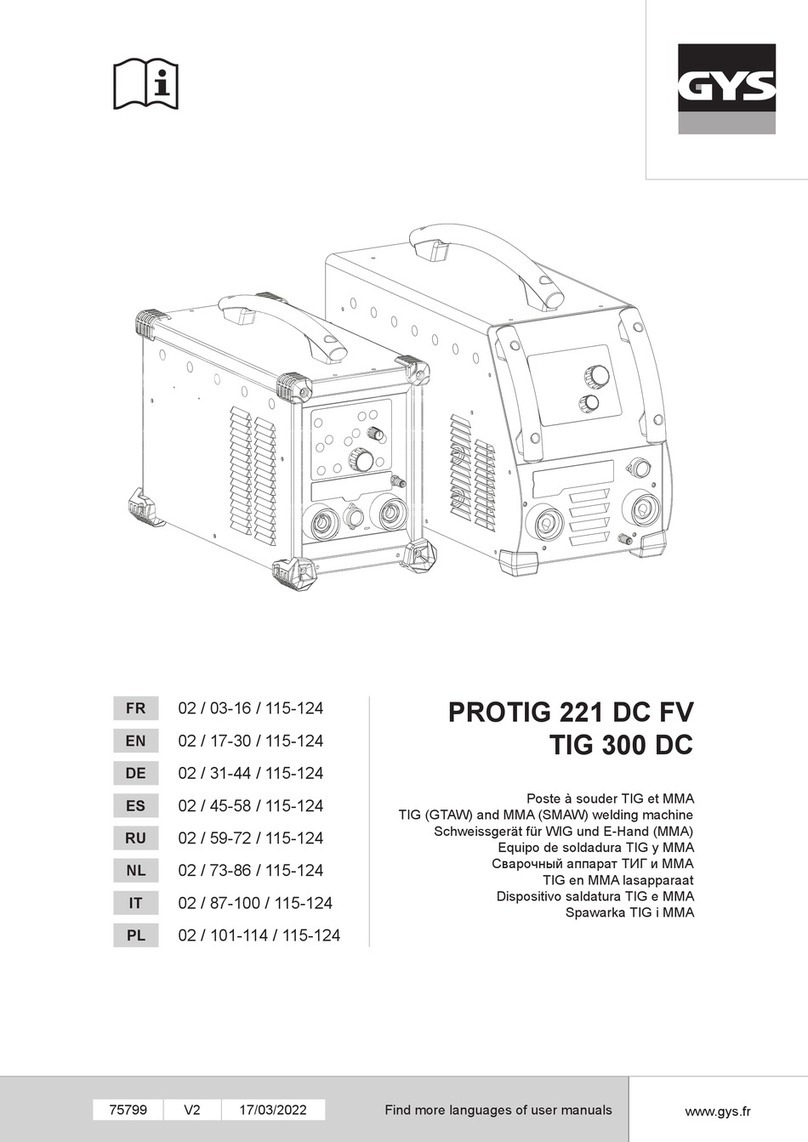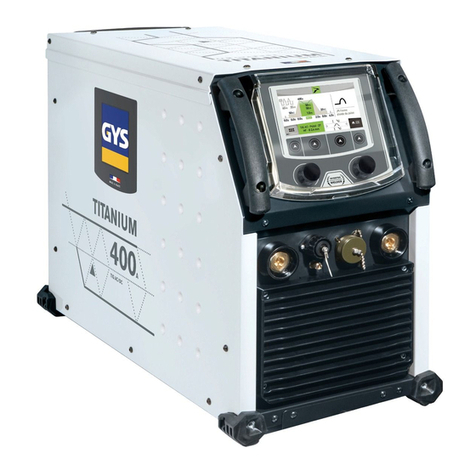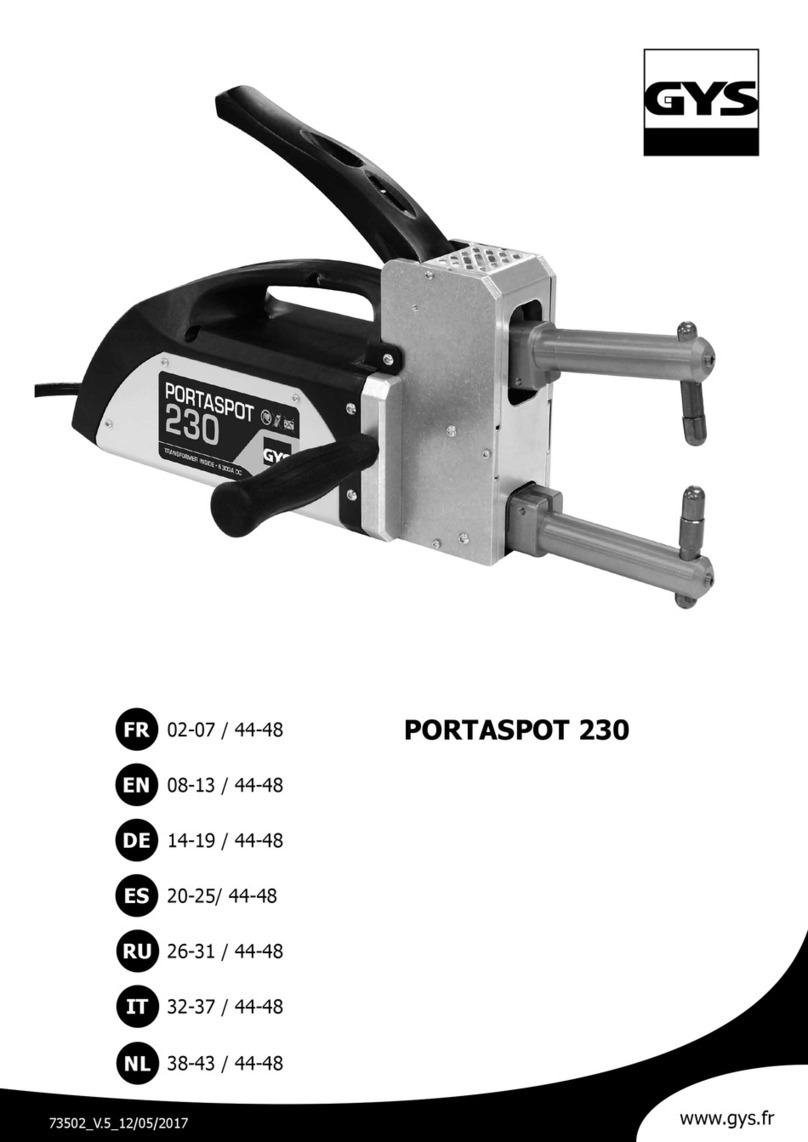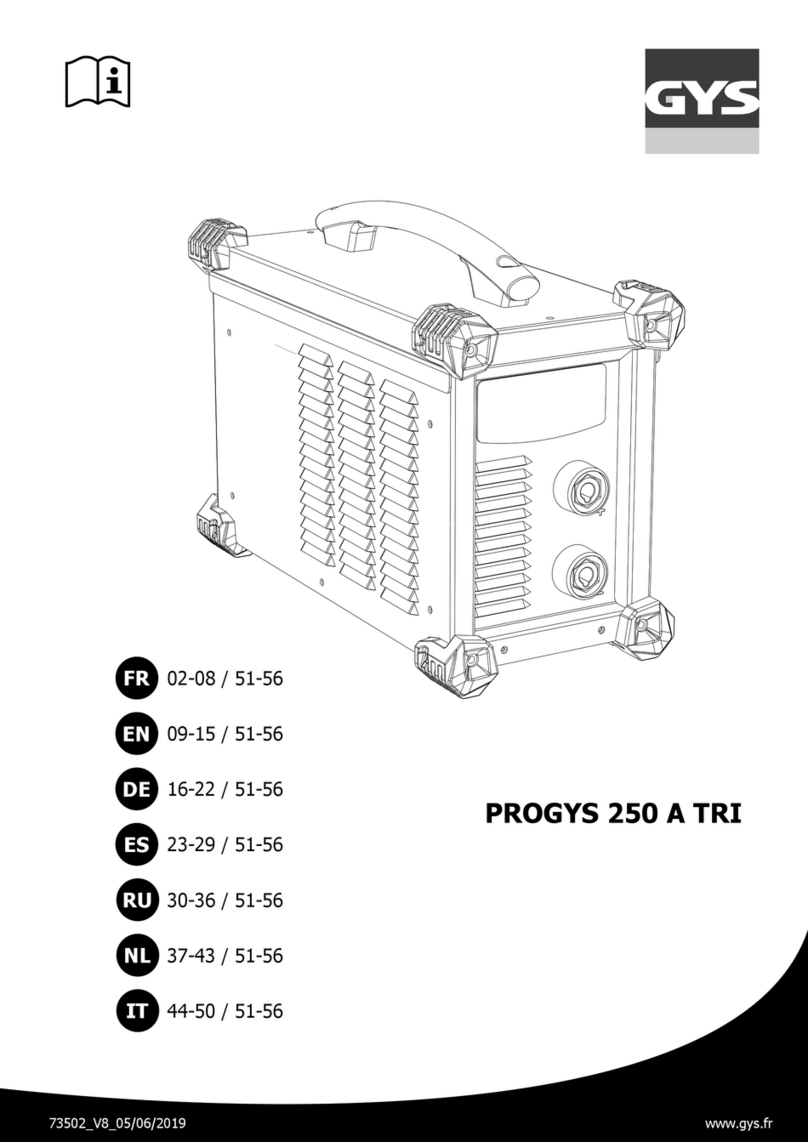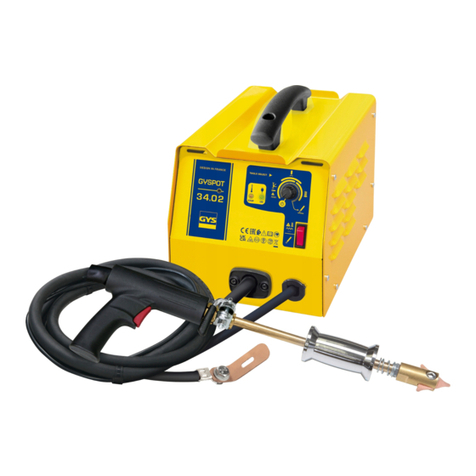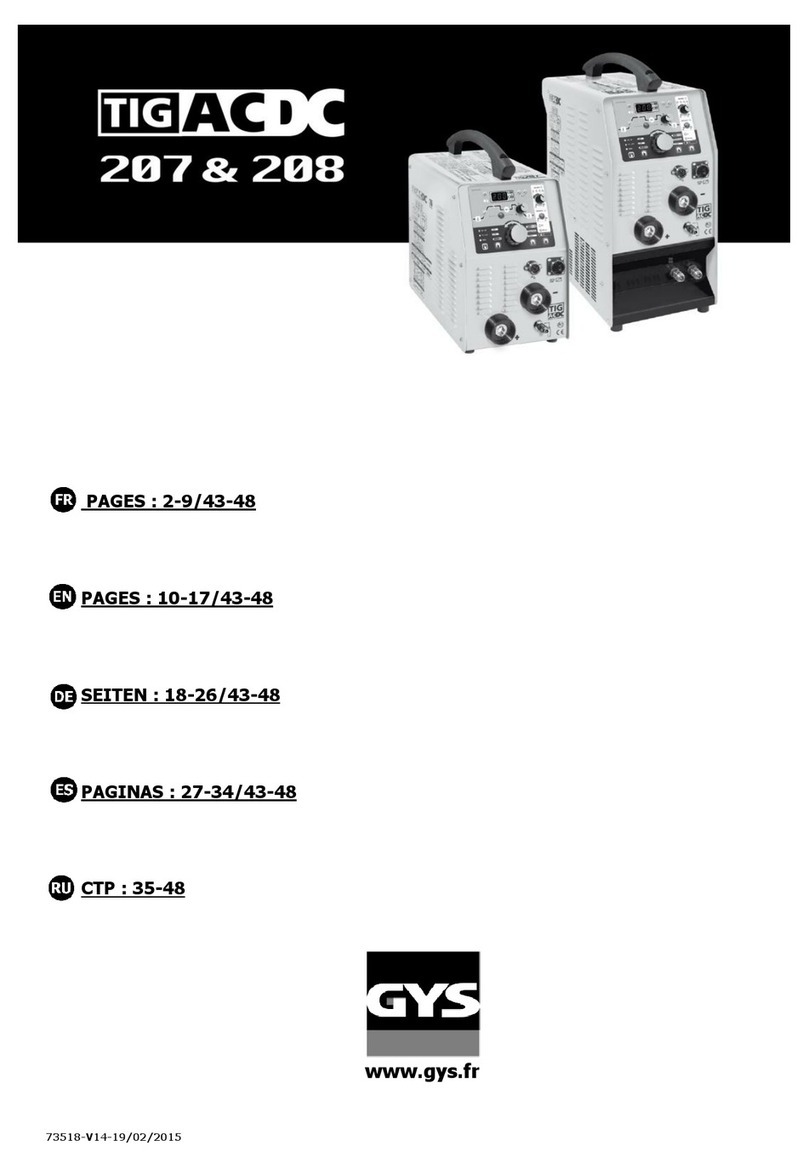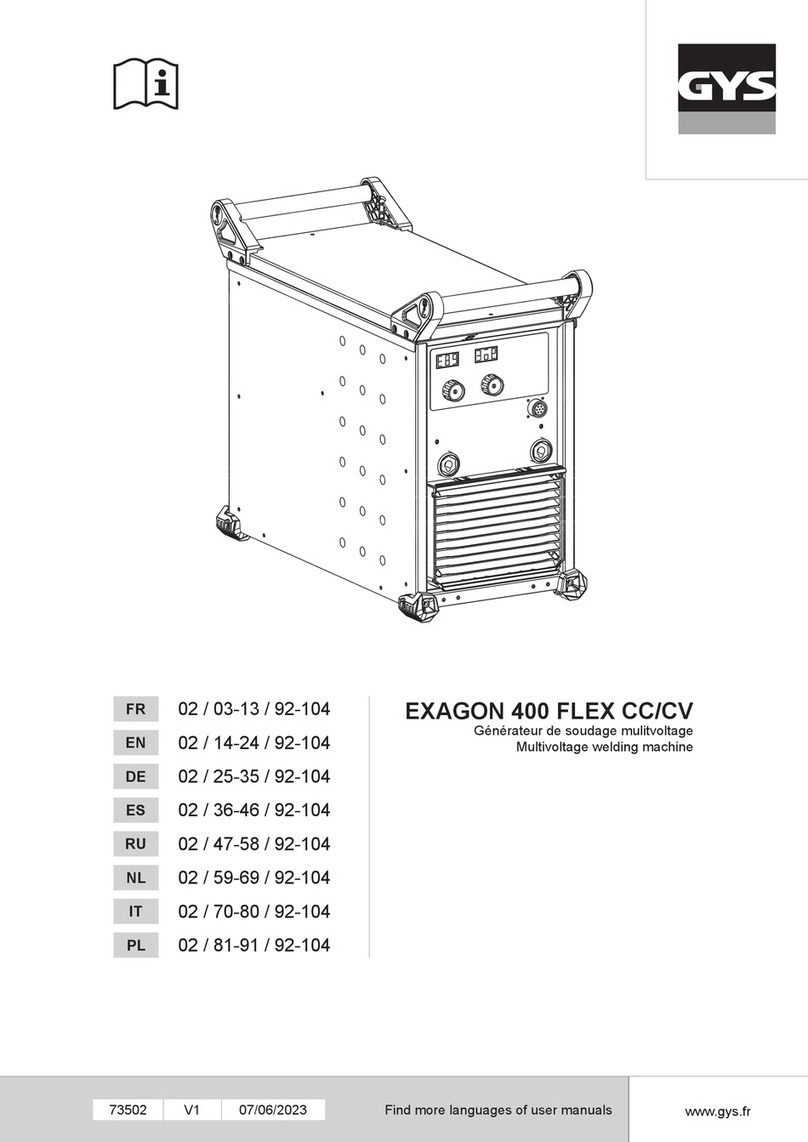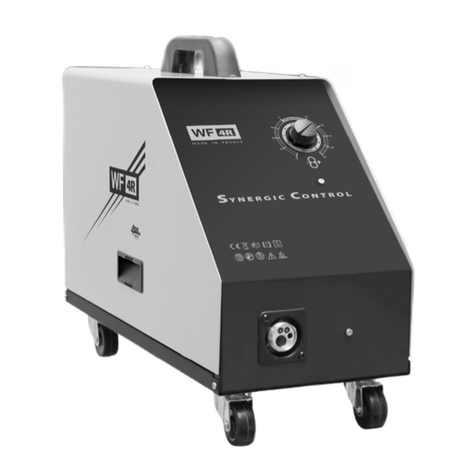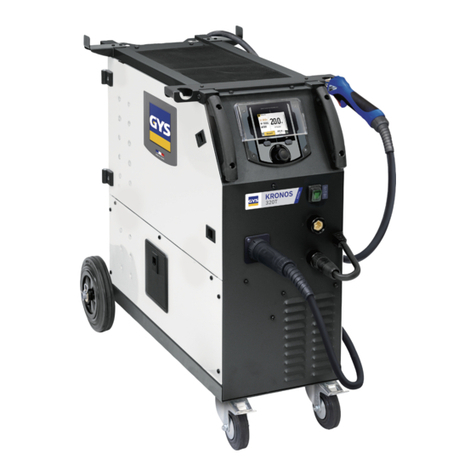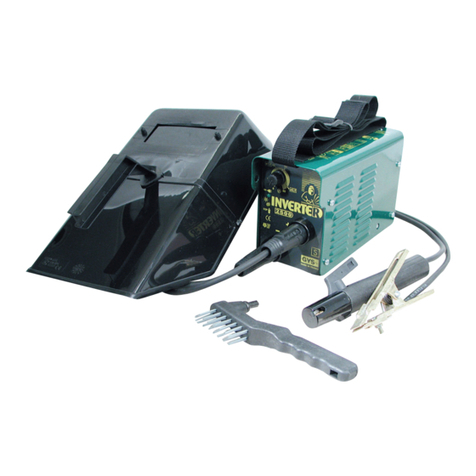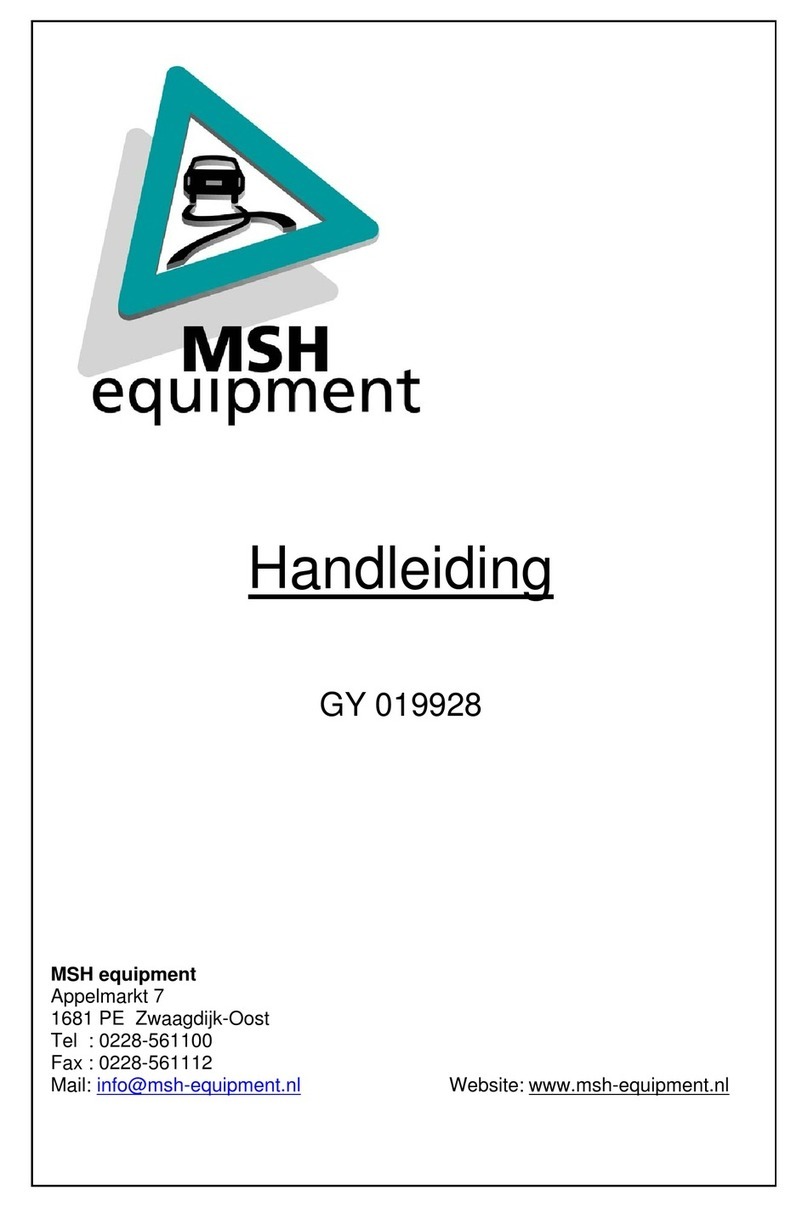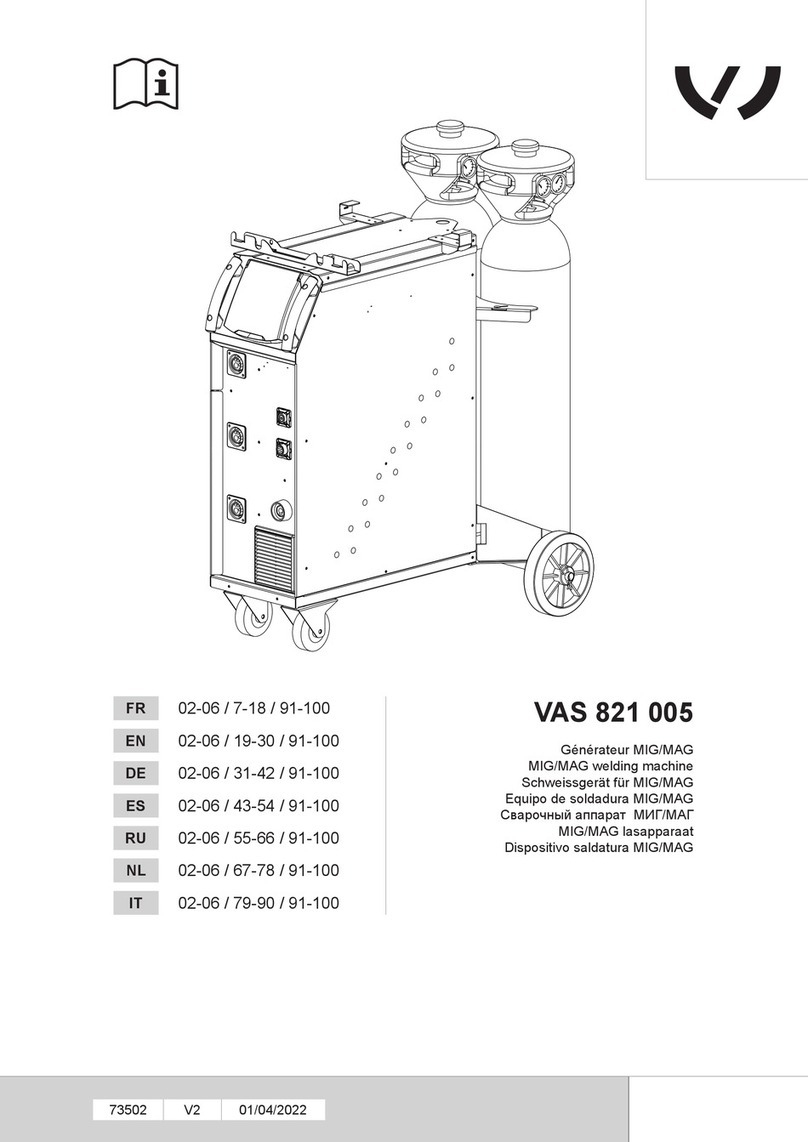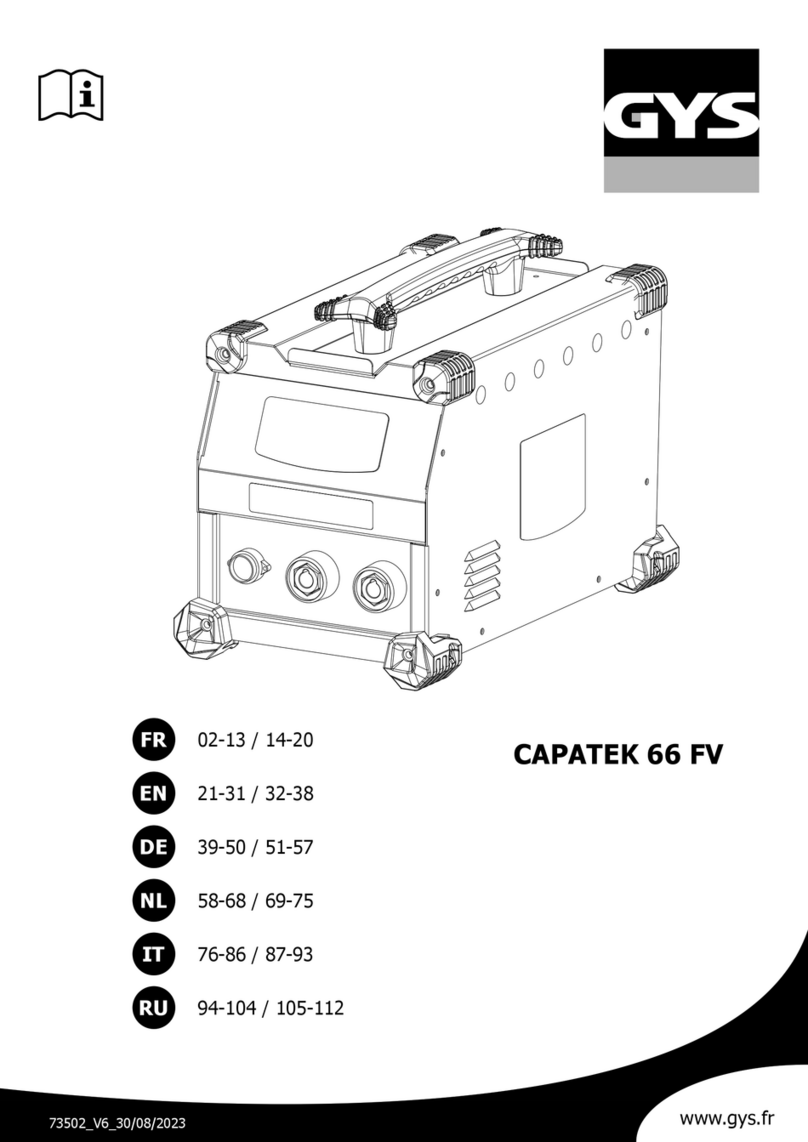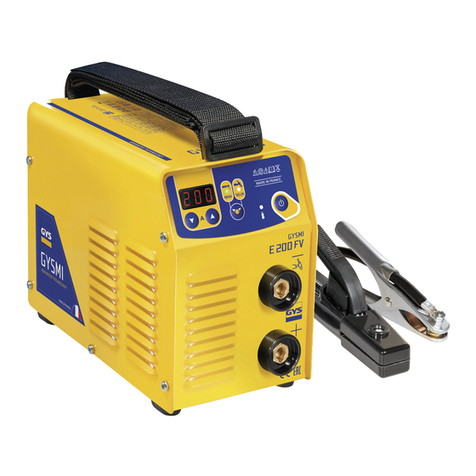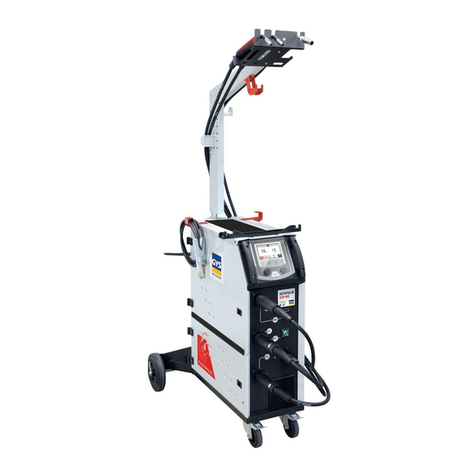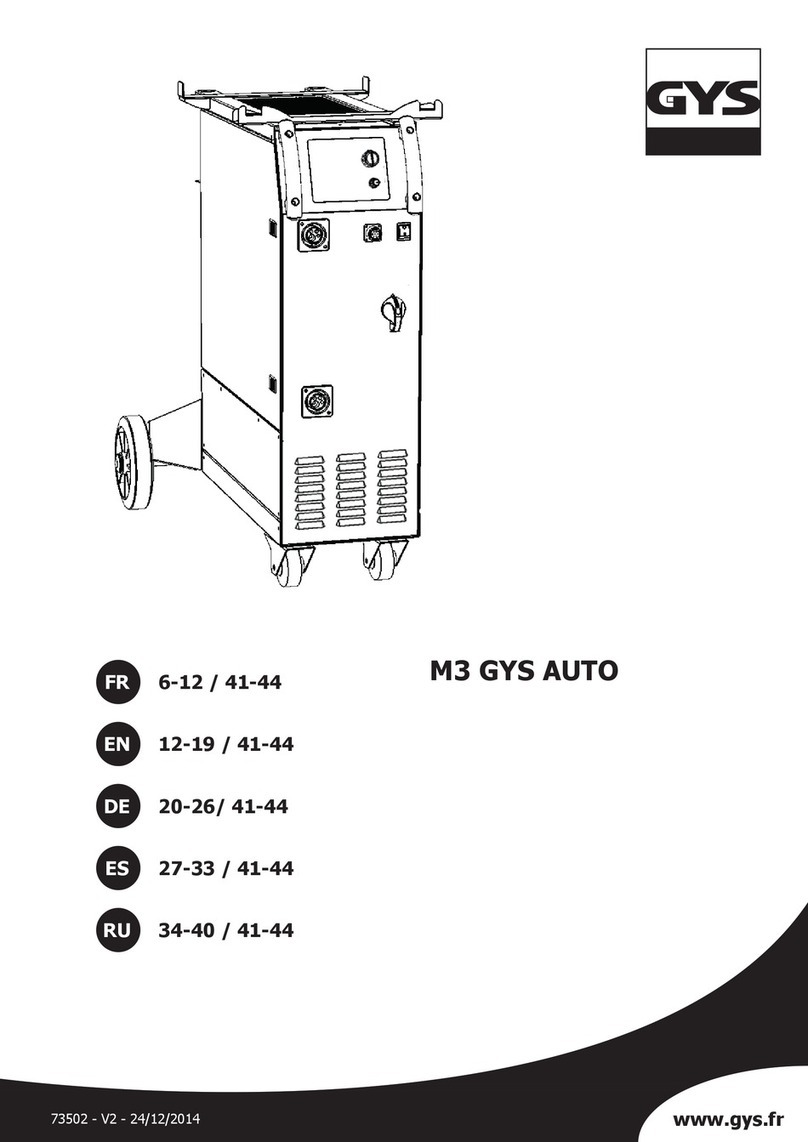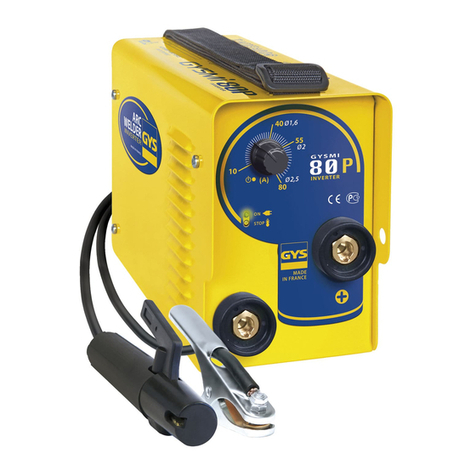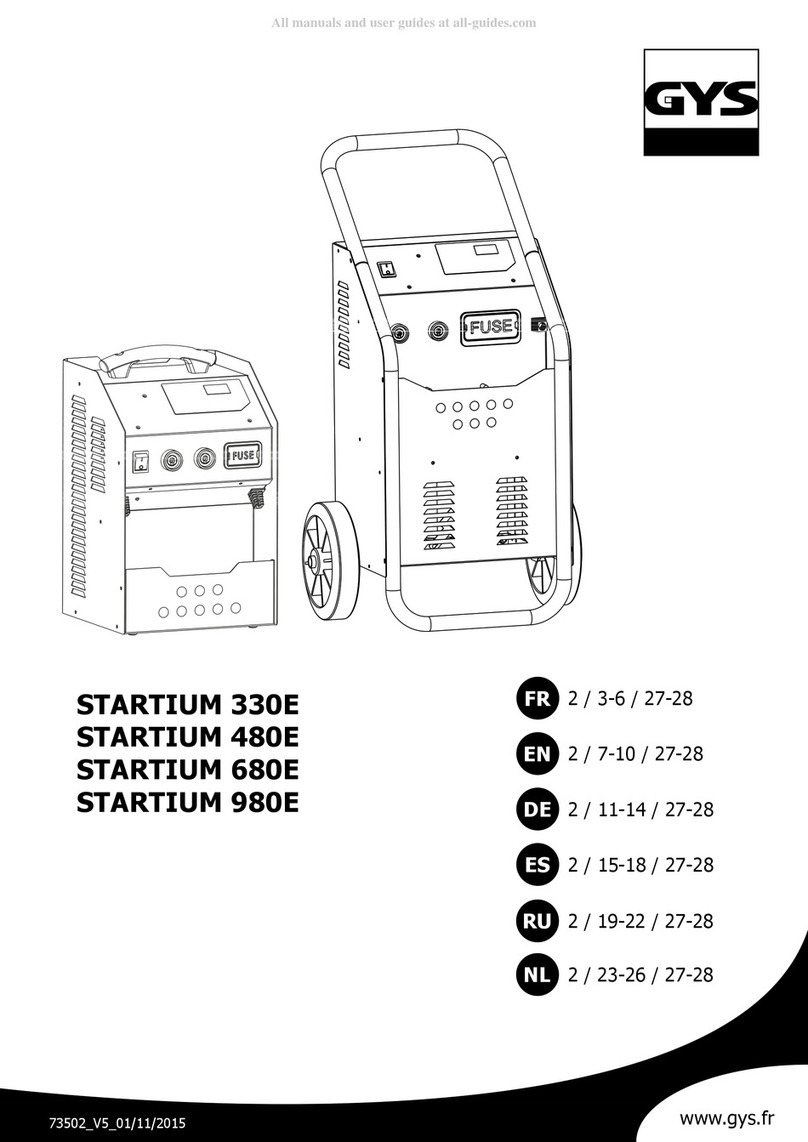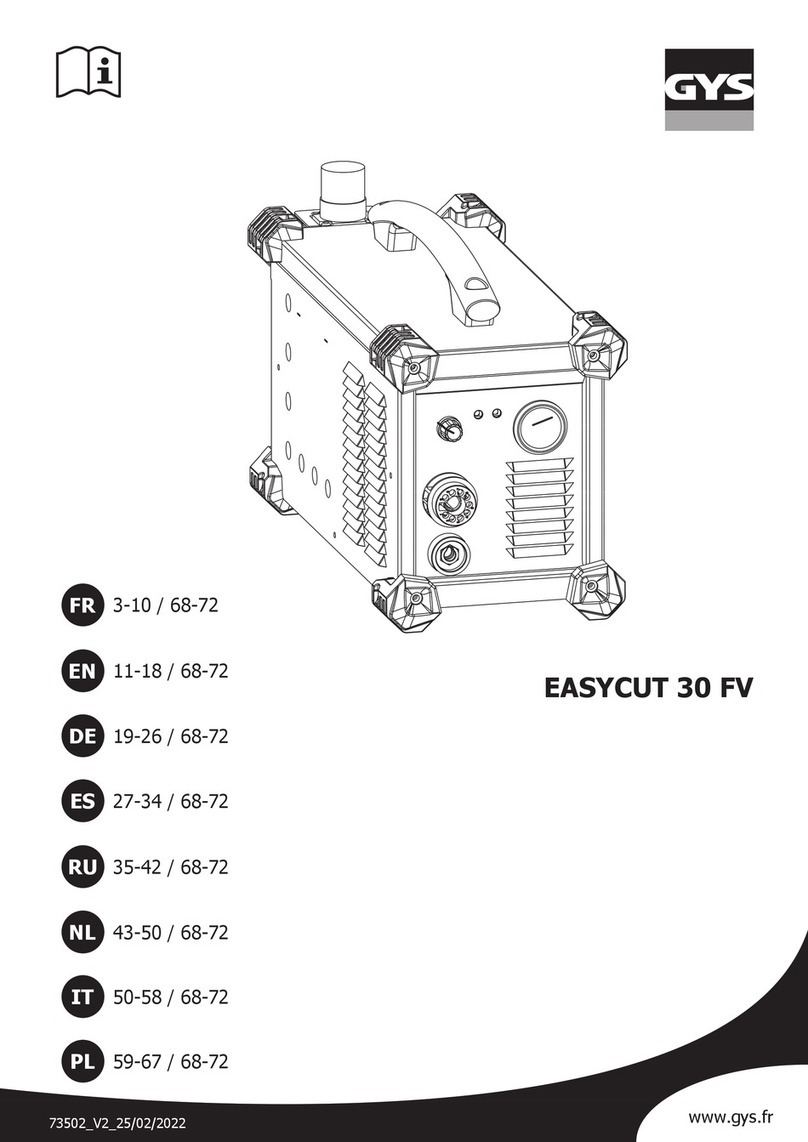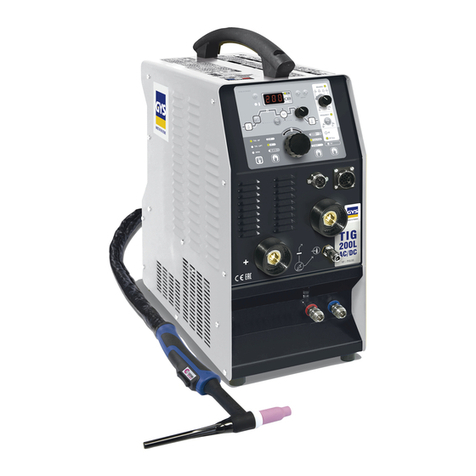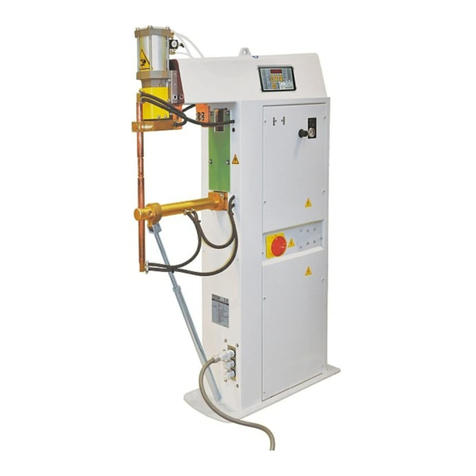
technical assiance. In some cases, this corrective action may be as simple as earthing the welding circuit. In other cases, it may be
necessary to conruct an electromagnetic shield around the welding power source and around the entire piece by tting input lters.
In all cases, electromagnetic interferences mu be reduced until they are no longer inconvenient.
Welding area assessment
Before inalling the machine, the user mu evaluate the possible electromagnetic problems that may arise in the area where the
inallation is planned. The following mu be taken into account:
a) the presence (above, below and next to the arc welding machine) of other power cables, remote cables and telephone cables;
b) television transmitters and receivers;
c) computers and other hardware;
d) critical safety equipment such as indurial machine protections;
e) the health and safety of the people in the area such as people with pacemakers or hearing aids;
f) calibration and measuring equipment;
g) the isolation of other pieces of equipment which are in the same area.
The user has to ensure that the devices and pieces of equipment used in the same area are compatible with each other. This may
require extra precautions;
h) the time of day during the welding or other activities have to be performed.
The surface of the area to be considered around the device depends on the building’s ructure and other activities that take place
there. The area taken into consideration can be larger than the limits of the inallations.
Review of the welding inallation
Reviewing the welding inallations can be useful to determine and resolve any case of electrical diurbances. The assessment of
emissions mu include in situ measurements as specied in Article 10 of CISPR 11. In situ measurements can also be used to conrm
the eectiveness of mitigation measures.
RECOMMANDATIONS SUR LES METHODES DE REDUCTION DES EMISSIONS ELECTROMAGNETIQUES
a. National power grid: The arc welding machine mu be connected to the national power grid in accordance with the manufacturer’s
recommendation. In case of interferences, it may be necessary to take additional precautions such as the ltering of the power supply
network. Consideration should be given to shielding the power supply cable in a metal conduit or equivalent of permanently inalled
arc welding equipment. It is necessary to ensure the electrical continuity of the shielding along its entire length. The shielding should
be connected to the welding current’s source to ensure good electrical contact between the conduct and the casing of the welding
current source.
b. Maintenance of the arc welding equipment: The arc welding machine should be subject to a routine maintenance check
according to the recommendations of the manufacturer. All accesses, service doors and covers should be closed and properly locked
when the arc welding equipment is on. The arc welding equipment mu not be modied in any way, except for the changes and
settings outlined in the manufacturer’s inructions.
c. Welding cables: Cables mu be as short as possible, close to each other and close to the ground, if not on the ground.
d. Equipotential bonding: consideration should be given to bonding all metal objects in the surrounding area. However, metal
objects connected to the workpiece increase the risk of electric shock if the operator touches both these metal elements and the
electrode. It is necessary to insulate the operator from such metal objects.
e. Earthing of the welded part: When the part is not earthed - due to electrical safety reasons or because of its size and its
location (which is the case with ship hulls or metallic building ructures), the earthing of the part can, in some cases but not
syematically, reduce emissions It is preferable to avoid the earthing of parts that could increase the risk of injury to the users or
damage other electrical equipment. If necessary, it is appropriate that the earthing of the part is done directly, but in some countries
that do not allow such a direct connection, it is appropriate that the connection is made with a capacitor selected according to national
regulations.
f. Protection and shielding: The selective protection and shielding of other cables and devices in the area can reduce perturbation
issues. The protection of the entire welding area can be considered for specic situations.
TRANSPORT ET TRANSIT DE LA SOURCE DE COURANT DE SOUDAGE
The welding source is tted with a handle to make it transportable by hand. Be careful not to underestimate the weight
of the machine. The handle are not design to be use to hang the machine to something else.
Do not use the cables or torch to move the machine.
Do not place/carry the unit over people or objects.
EQUIPMENT INSTALLATION
• Provide an adequate area to ventilate the machine and access the controls.
• Do not use in an area with conductive metal du.
• Power cables, extension leads and welding cables mu be fully uncoiled to prevent overheating.
12
GYSPOT 2600 / 2700 / 34.02 / 34.04 / 39.02 / 39.04 / PRO 230 / PRO 400 EN
Translation of the original instructions
